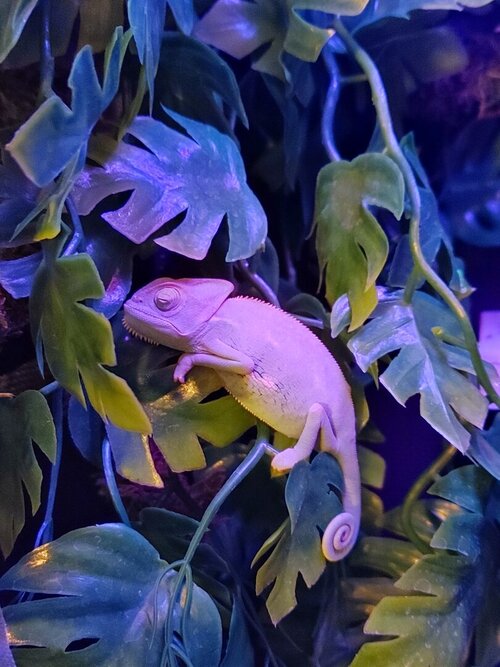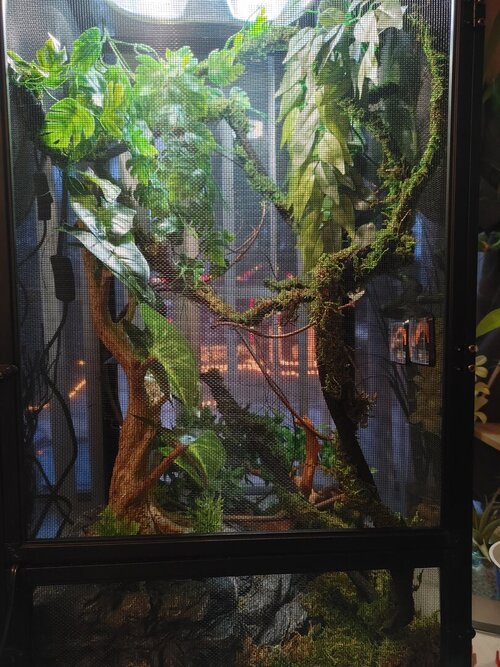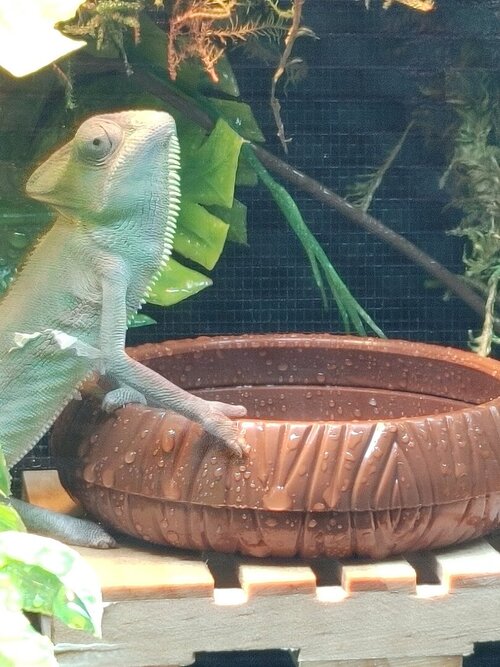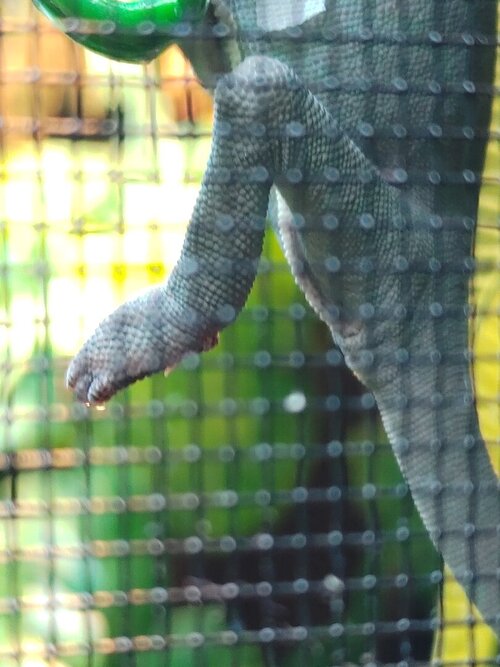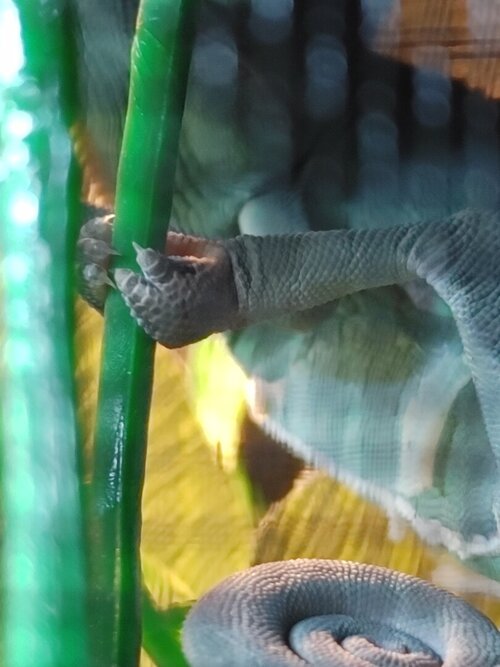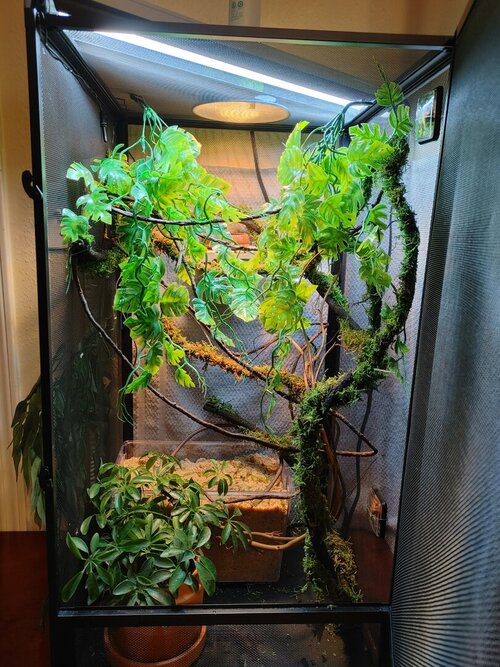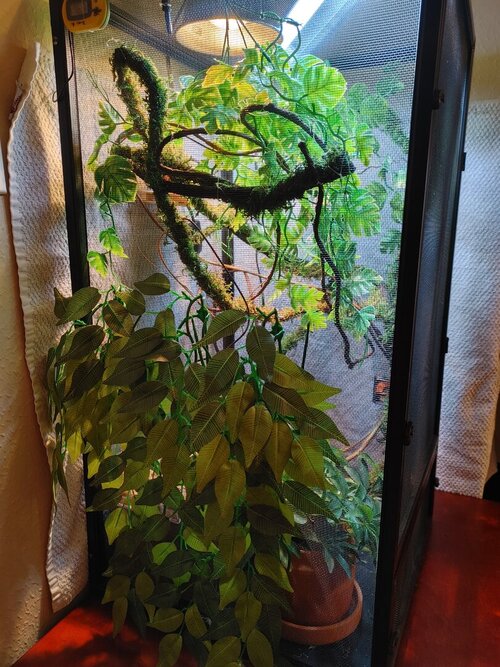Veiled Lady
Member
Hello all! I am new here and in need of a little help. I was gifted a juvenile female veiled cham for Christmas. I had covid and was sick at the time so was not able to properly set up the enclosure. I am finally at a point of not being sick and in desperate need of updating the enclosure to include a laying bin (Petsmart said it was a male at the time of purchase when in fact it is not) and additional branches and live plants. My cham is still adjusting, although not hiding at the sight of me anymore and coming out when I feed her, but will hide, run from me, and even hissed at me last night when I try to put my hand close to her. I need to move her to a temporary spot so that I can update her enclosure. How do I do this without completely stressing her out? I have attached a pic of my cham, Lady, and her current enclosure set up.

